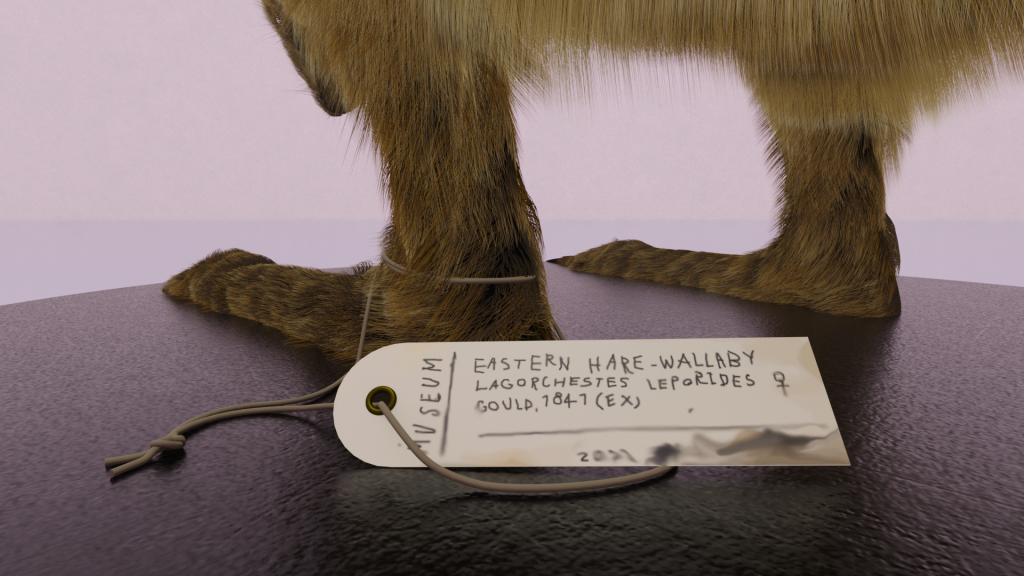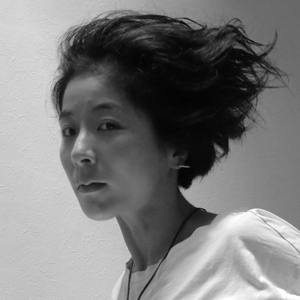STATEMENT
Suppose you are watching a film and you see a dead animal projected on a screen. Is the animal acting dead animal, or is it really dead? With this question, you will be confronted with the fact that humans are forcing "non-humans" to play some role in a human-made narrative.
Throughout my entire childhood, I have been deeply involved with the natural environment undergoing rapid change due to human factors and the problems faced by the wildlife that inhabits in the nature, because of my parents' profession. And these experiences have greatly influenced my way of thinking, made me start to think and create works about the strange phenomena, interpretations, misinterpretations, and creations that occur when humans see and talk about "something not human."
I believe that the world for "something non-human" is different from the world as I see it. I also believe that humans will never, can see and know that world which does exist in parallel. However, the human imagination tries to go beyond that. This ability is usually more effective when things are "unseen." With this ability, I strip away the meanings, roles, status, relationships, etc., that humans have given to "non-humans" and try to encounter them again at an overwhelming, shuddering point, as if something were suddenly thrown out in front of us, only to find ourselves present with that "non-humans". These experiments of mine are probably like how dancers learn, for the first time, how their unseen parts of the body, the bones and muscles move by walking extremely slowly. And after all, it is not unrelated to knowing that I, and they who are different from me, are all small parts that exist together in an even more vast cycle. My work can be described as "time itself" for someone to sit still on the earth and think about a world that humans cannot see or know. Through my work, I seek to create an opportunity for humans to think about what is not human in complete freedom, free from names and roles assigned by someone else.
ABOUT THE WORK
Hollow-Hare-Wallaby is a taxidermy of an animal called Eastern hare-wallaby. The taxidermy, however, does not exist in reality, but only in the form of computer graphics (CG). It may sound strange, but it is therefore a “taxidermy of an extinct species” left behind in the virtual space. The title “Hollow-Hare-Wallaby” refers to the hollowness and emptiness of the Eastern Hare Wallaby.
Eastern hare-wallaby is a marsupial that once existed in Australia. It is speculated that it became extinct at the end of the 19th century, due to the changes in its habitat that occurred when migrants brought in rabbits and red foxes from the European continent. The assumption is that the Eastern hare-wallaby became extinct about 50 years after the species was identified by the British ornithologist John Gould, known to be the first scientist to systematically describe Australian wild animals, and there exist almost no records related to its ecology. Existing today are taxidermied specimen, prints and drawings only, but they look so familiar that one gets the illusion that the Eastern hare-wallaby is still alive and kicking in Australia’s nature reserves today. (I may digress here, but let me add that existing prints of the Eastern hare-wallaby include works by Gould’s wife and illustrator Elizabeth [née Coxen, 1804-1841]. She made in fact also many of the lithographs in her husband’s publications, but shared with many female contemporaries the experience that she was not credited for her work.)
For myself, who lives right in the middle of the era of the sixth mass extinction on planet Earth, the “extinction of a species” is a gut-wrenching fact, and at the same time, an extraordinary occurrence that feels as if being sucked into the darkness of the universe. This is because, when considering the history of the earth’s ecology, the possibility can certainly not be ruled out that mankind, after having invented the term “extinction” to refer to this situation, will become extinct itself. On the other hand, there is also the hope that mankind will be capable of cause a miracle. One thing that may be helpful here is the habit of desperately imagining living beings other than humans, for example.
As explained above, it is impossible for us today to know what the extinct Eastern hare-wallaby really looked like in reality. With cooperation from the Museo Regionale di Scienze Naturali di Torino, Hollow-Hare-Wallaby was made based on a full-scale taxidermy of the Eastern hare-wallaby. Nevertheless, just like the tigers in Delacroix’s paintings sometimes resemble tiger carpets than living tigers, and like depictions of elephants in Buddhist art look like mythical creatures very different from real epephants, Hollow-Hare-Wallaby is quite obviously a product of one-sided human imagination. When we are aware of this, humans supposedly imagine what the world is like for living beings other than humans, pay respect to that, and ask themselves what kinds of things mankind may leave behind on earth.
[Credits]
Concept, Direction, Edit, CG, Sound: HAYAMA Rei
Instruments sound: Lars RUDOLPH
Zoological Information: Luca GHIRALDI, Museo Regionale di Scienze Naturali di Torino, Italy
Sound Mastering: YAMAZAKI Iwao
Equipment and Studio: MAKINO Takashi
Technical Assistance: TANAKA Daichi
Special Thanks: Lawrence ENGLISH, Room40, Stephen CHENG, Alexander LAU





